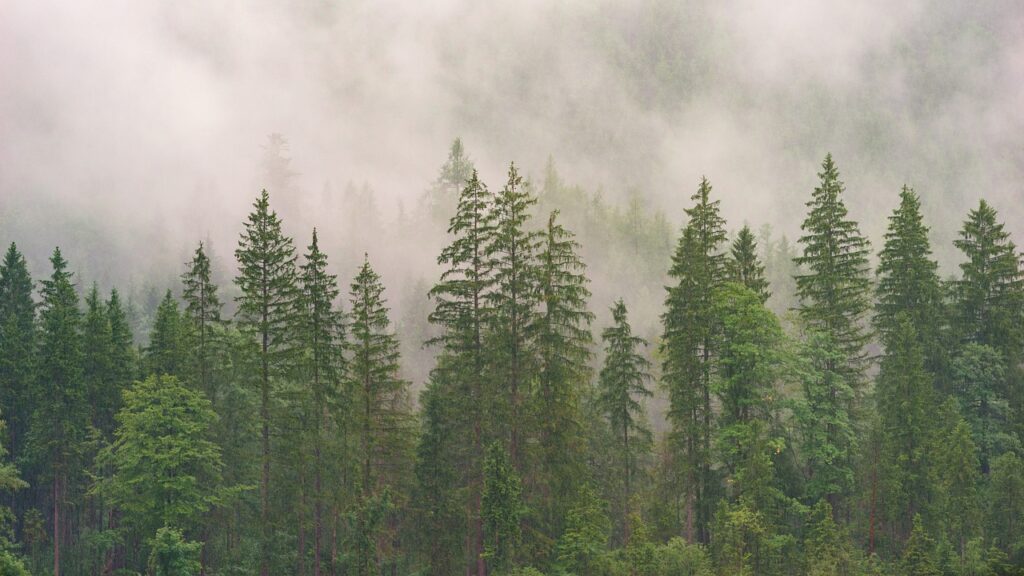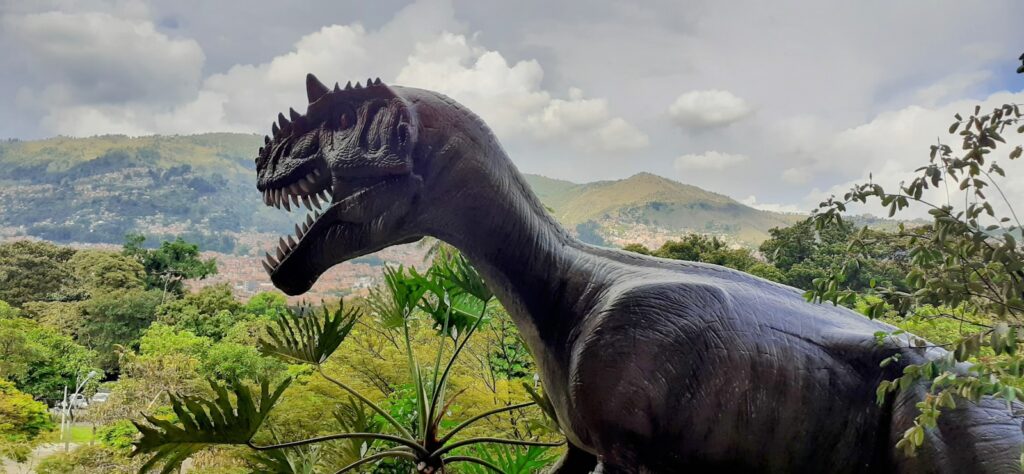Picture yourself standing in a forest where every leaf towers above your head, where ferns grow as tall as modern oak trees, and where the air itself pulses with an ancient energy you’ve never experienced. This wasn’t science fiction – this was the Jurassic Period, roughly 150 million years ago when our planet wore a completely different green coat.
The world that giants like Brachiosaurus called home wasn’t just bigger in terms of dinosaurs. The entire plant kingdom had evolved into something almost alien compared to today’s vegetation. These weren’t the delicate flowers and grasses we’re familiar with, but rather towering conifers, massive ferns, and bizarre plants that seemed more like something from another planet than from our own Earth’s past.
When Trees Touched the Sky: The Conifer Giants
The Jurassic landscape was dominated by conifers that make today’s tallest redwoods look like saplings. These ancient evergreens, including species like Araucaria and early relatives of modern pines, stretched toward the sky with trunks so massive that entire herds of dinosaurs could shelter beneath their canopy. Some of these prehistoric giants reached heights of over 200 feet, creating cathedral-like forests that filtered sunlight into dappled patterns across the forest floor.
What made these conifers so successful wasn’t just their size, but their incredible adaptability. Unlike modern trees that must compete with flowering plants, Jurassic conifers had the landscape largely to themselves. They developed thick, waxy needles that could withstand the humid, greenhouse-like conditions of the period, and their cone-bearing reproductive system was perfectly suited to the windy conditions that swept across the ancient continents.
The resin produced by these trees was so abundant that it created vast deposits of amber, preserving insects and small organisms for millions of years. Walking through a Jurassic forest would have been like walking through a natural perfume factory, with the rich scent of pine resin mixing with the earthy smell of decomposing plant matter.
The Fern Revolution: When Ferns Ruled The Understory
Beneath the towering conifers, a green revolution was taking place at ground level. Ferns during the Jurassic weren’t the modest houseplants we know today – they were botanical giants that could grow to tree-like proportions. The Cyatheaceae family, or tree ferns, created dense understory forests that looked more like something from a tropical rainforest than anything we see in temperate climates today.
These ancient ferns had developed sophisticated root systems that could tap into the rich, humid soil of the Jurassic world. Some species grew so large they competed directly with smaller conifer trees for space and sunlight. Their fronds, some reaching lengths of 15 feet or more, created a layered canopy system that provided different ecological niches for various dinosaur species.
The spores produced by these ferns were so numerous that they created clouds of reproductive material that drifted across continents. This method of reproduction was incredibly effective in the warm, moist conditions of the Jurassic, allowing fern species to spread rapidly across the globe and establish themselves as dominant members of the plant community.
Cycads: The Crown Jewels of Jurassic Gardens
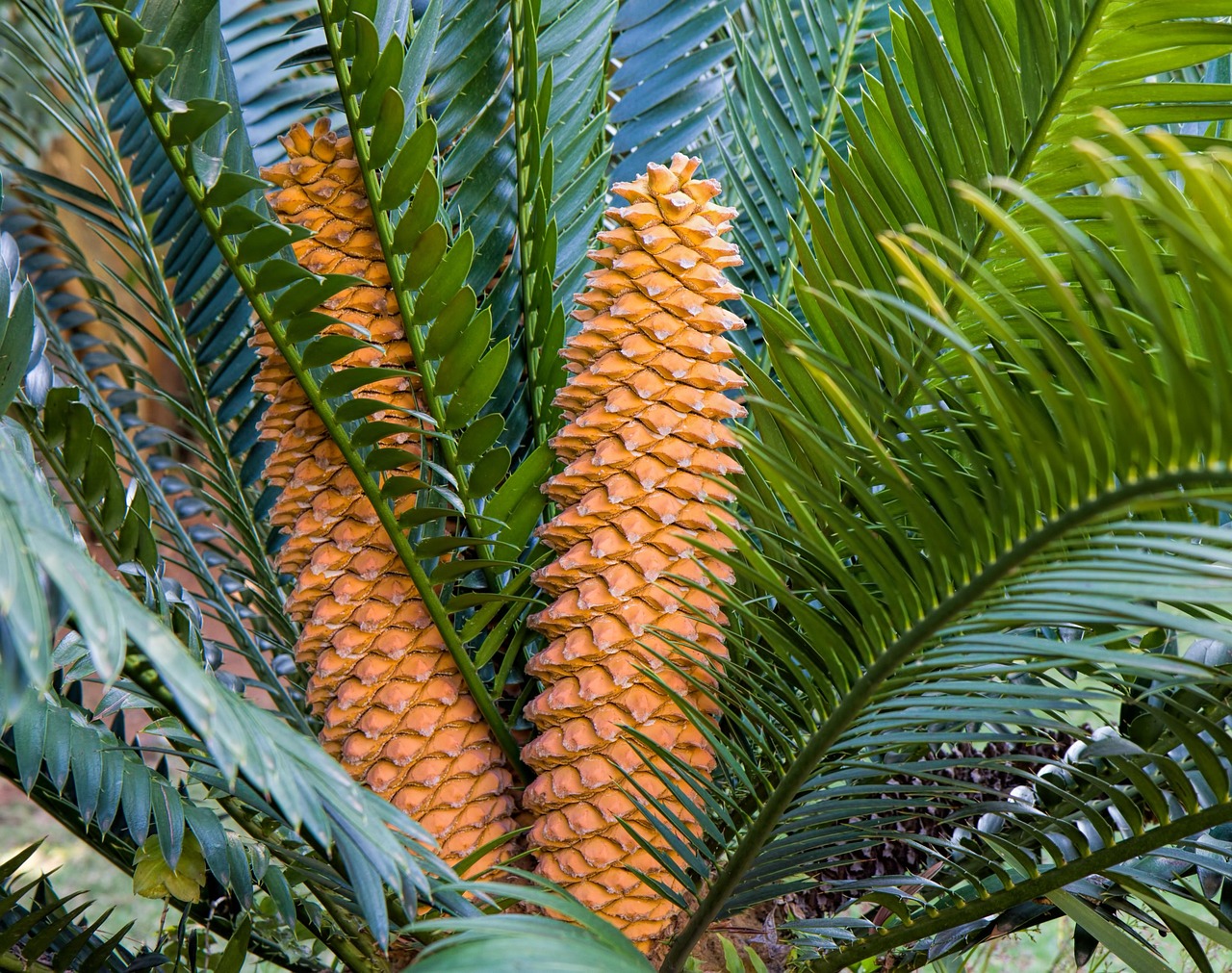
Perhaps no plant group captures the essence of Jurassic plant life better than the cycads. These palm-like plants, with their distinctive crown of feathery fronds atop sturdy trunks, were the aristocrats of the ancient plant world. Unlike modern palms, cycads reproduced using large, colorful cones that could weigh up to 80 pounds and stood out like beacons in the green landscape.
Cycads had developed a unique relationship with the animal kingdom that was millions of years ahead of its time. Many species relied on beetles for pollination, creating some of the earliest known examples of plant-animal cooperation. The beetles would be attracted to the heat and smell produced by the cycad cones, inadvertently transferring pollen as they moved from plant to plant.
These remarkable plants were incredibly slow-growing, with some specimens taking decades to reach maturity. This patience paid off in longevity – individual cycads could live for centuries, creating stable landmarks in the ever-changing Jurassic landscape. Their thick, waxy leaves were perfectly adapted to retain moisture during dry periods, while their deep root systems allowed them to access water sources that other plants couldn’t reach.
Ginkgo Forests: Living Fossils of the Jurassic
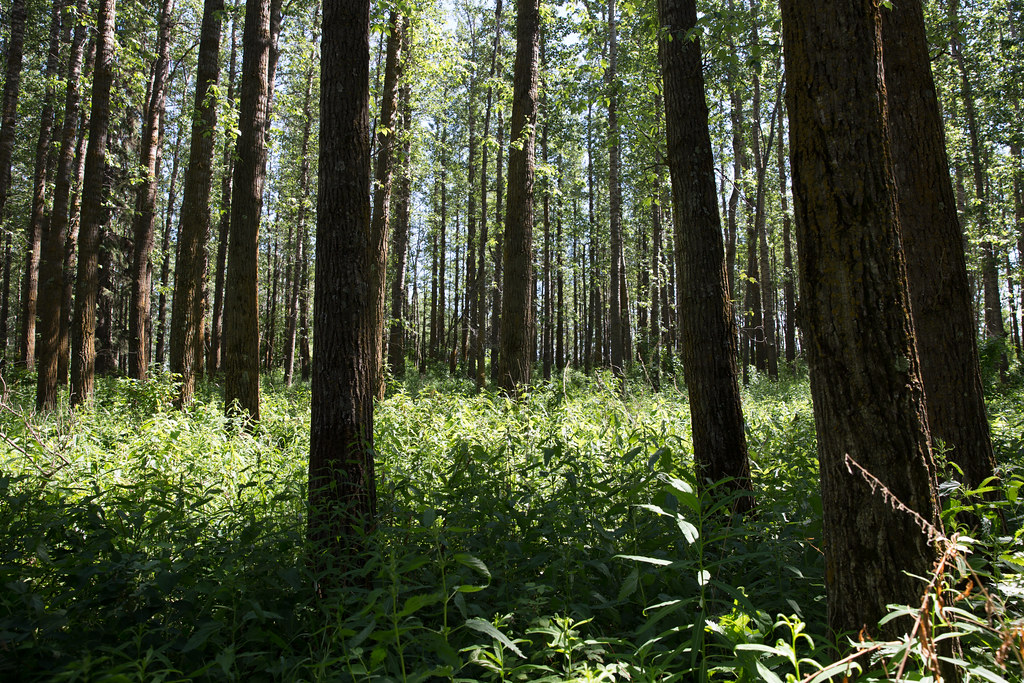
The distinctive fan-shaped leaves of ginkgo trees created some of the most unique forests in the Jurassic world. These trees, which we now know as living fossils, were once so common that their leaves formed thick carpets across the forest floor. The golden autumn displays of ancient ginkgo forests must have been breathtaking, with entire hillsides turning brilliant yellow as the seasons changed.
Ginkgo trees during the Jurassic were far more diverse than the single species that survives today. Multiple species with varying leaf shapes and sizes created complex forest ecosystems where different ginkgo varieties occupied different ecological niches. Some grew as tall canopy trees, while others remained smaller and formed dense thickets in clearings and along riverbanks.
The reproductive strategy of ginkgos was particularly fascinating. Female trees produced seeds with a fleshy outer coating that, when ripe, gave off a distinctive smell that attracted dinosaurs and other animals. These creatures would eat the seed coating and disperse the hard inner seeds through their droppings, creating a distribution network that spanned continents.
Horsetails: The Bamboo of the Jurassic
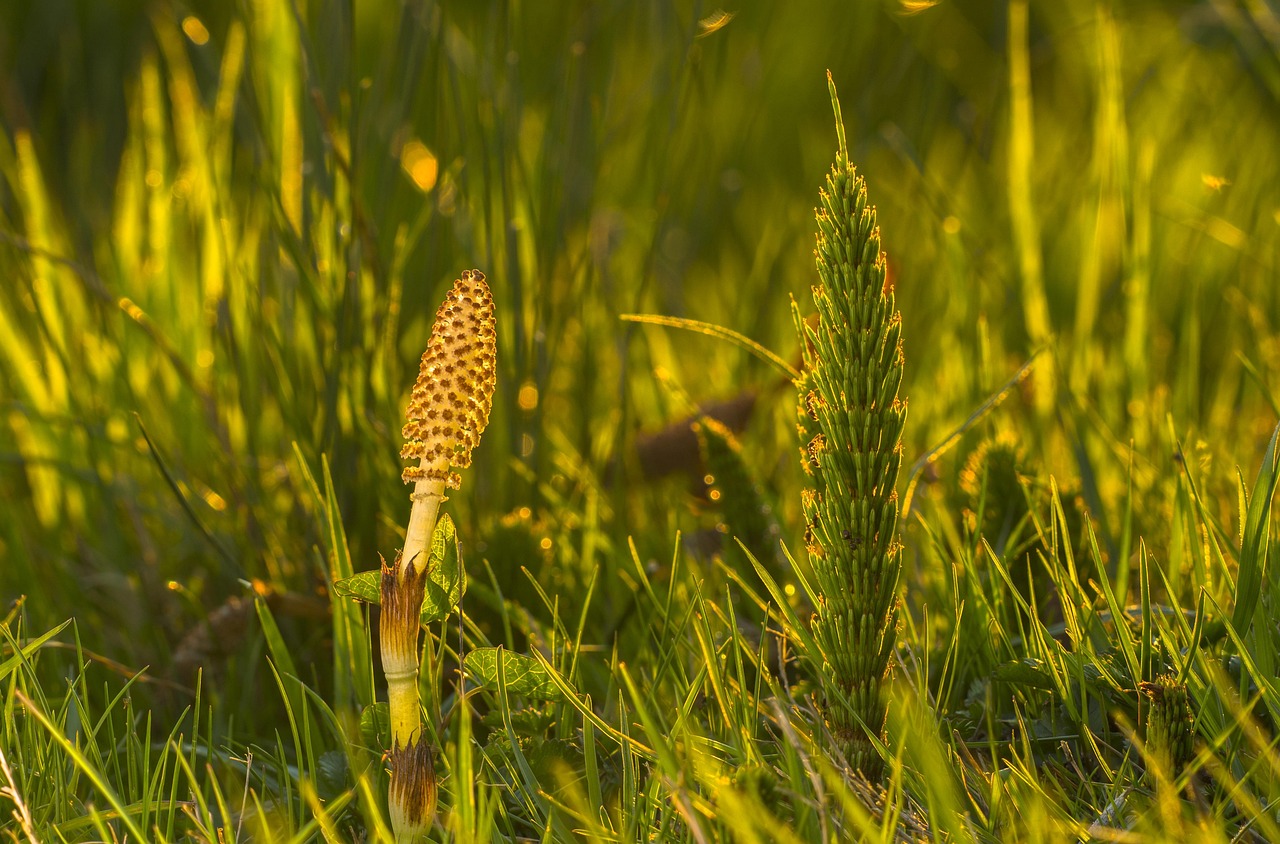
Along the banks of Jurassic rivers and in marshy areas, giant horsetails created dense stands that functioned much like bamboo forests do today. These plants, related to modern Equisetum, grew to heights of 30 feet or more and formed nearly impenetrable thickets that provided shelter and food for countless dinosaur species. Their hollow, jointed stems were incredibly strong yet flexible, allowing them to bend in flooding waters without breaking.
The reproductive cycle of these giant horsetails was a spectacle in itself. During certain seasons, they would produce massive cone-like structures at their tips that released clouds of spores into the air. These spore clouds were so dense they would temporarily darken the sky, creating a natural phenomenon that modern observers would find almost magical.
These plants were also remarkable for their ability to absorb and concentrate minerals from the water and soil. Their tissues contained high levels of silica, making them naturally abrasive and giving them a unique texture that some herbivorous dinosaurs seemed to prefer. The sound of large dinosaurs moving through dense horsetail stands would have been like listening to a giant wind chime orchestra.
Moss Carpets: The Foundation of Jurassic Ecosystems
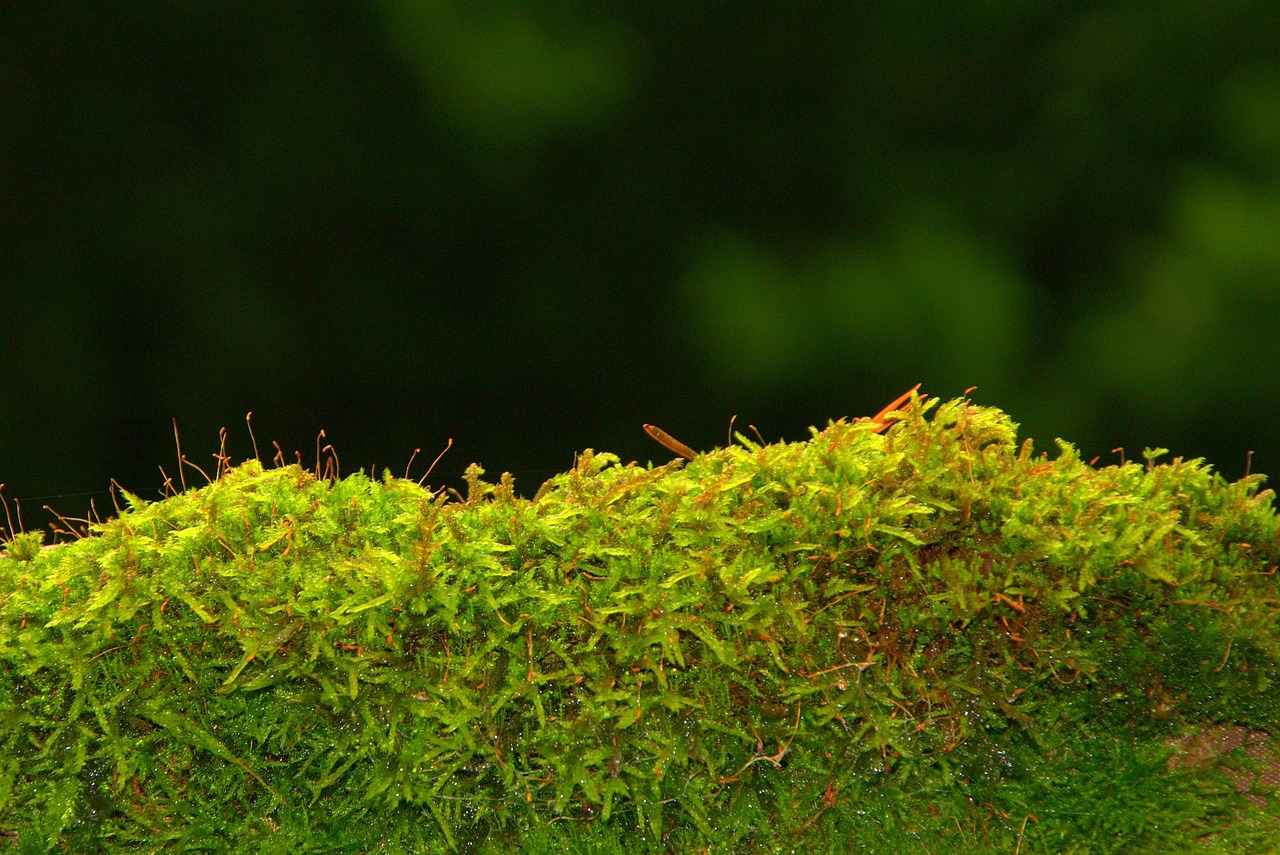
While giant trees and ferns dominated the vertical space of Jurassic forests, it was the humble mosses that created the foundation of these ancient ecosystems. These small but mighty plants formed thick carpets across the forest floor, creating spongy surfaces that absorbed rainwater and prevented erosion. The moss layer was so thick in some areas that it acted like a natural water retention system, keeping the soil moist even during dry periods.
Jurassic mosses were far more diverse than their modern cousins, with species adapted to every conceivable micro-environment. Some grew exclusively on the bark of giant conifers, creating vertical gardens that extended hundreds of feet into the air. Others specialized in growing on rocks and fallen logs, slowly breaking down organic matter and creating the rich soil that supported larger plants.
The ecological importance of these moss carpets cannot be overstated. They provided nursery areas for tree seedlings, shelter for small animals, and a complex microhabitat that supported countless species of insects and other invertebrates. Walking across a Jurassic forest floor would have been like walking on a living, breathing carpet that responded to every step with a soft, springy resilience.
Liverworts: The Unsung Heroes of Wet Environments
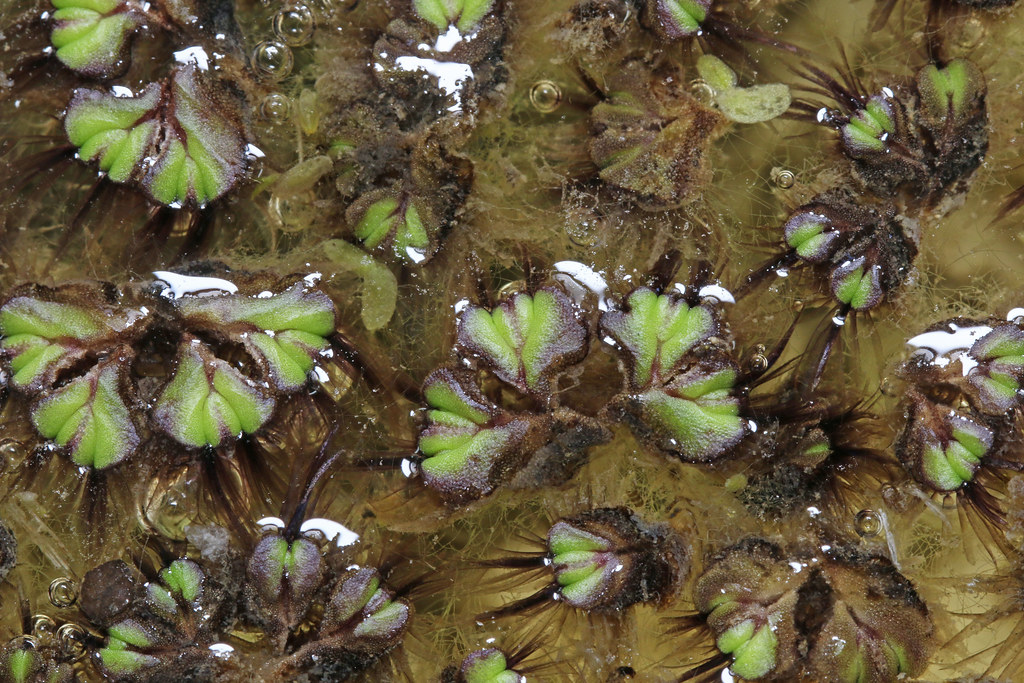
In the perpetually moist environments of Jurassic wetlands, liverworts created some of the most productive ecosystems on Earth. These small, flat plants formed dense mats along stream banks and in boggy areas, creating a green foundation that supported entire food webs. Their ability to absorb nutrients directly from water made them incredibly efficient at capturing and concentrating the minerals that other plants needed to survive.
The reproductive strategy of Jurassic liverworts was particularly well-adapted to their wet environment. They produced tiny, cup-shaped structures that collected rainwater and used it to splash their reproductive cells to new locations. This splash-cup mechanism was so effective that liverworts could colonize new areas rapidly after flooding events, quickly establishing themselves as the dominant ground cover in disturbed habitats.
These plants also played a crucial role in water purification, absorbing excess nutrients and preventing the eutrophication that can occur in slow-moving water bodies. Their dense growth created complex surface textures that slowed water flow and encouraged the settlement of sediments, helping to maintain the clear, clean water that was essential for many other forms of aquatic life.
Algae Blooms: The Underwater Gardens
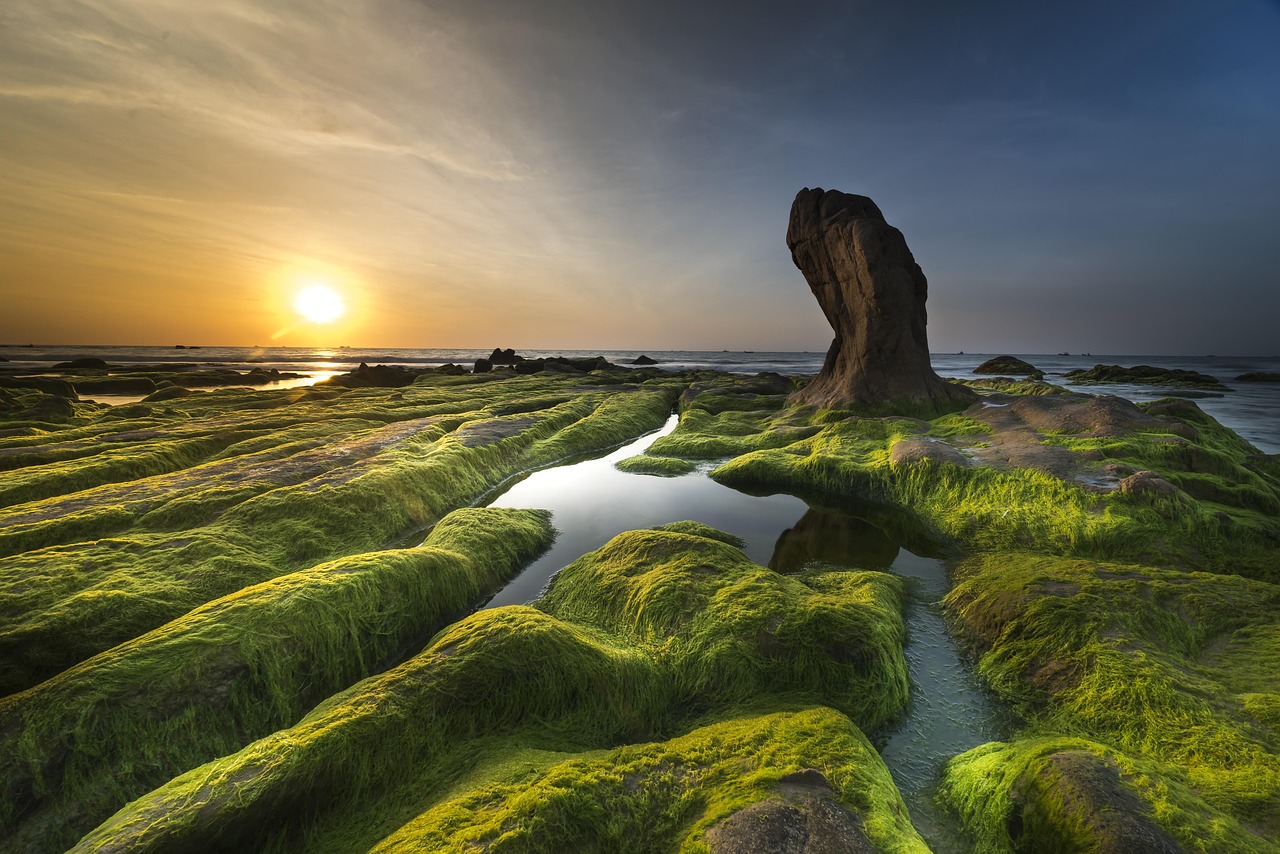
Beneath the surface of Jurassic lakes and slow-moving rivers, massive algae blooms created underwater gardens that were every bit as impressive as the terrestrial forests above. These weren’t the problematic algae blooms we associate with modern pollution, but rather healthy, diverse communities of photosynthetic organisms that formed the base of complex aquatic food webs.
The warm, nutrient-rich waters of the Jurassic period were perfect for algae growth, and these microscopic plants responded by creating some of the most productive aquatic ecosystems in Earth’s history. Massive colonies of blue-green algae formed floating mats that could be seen from space, if anyone had been there to observe them. These algae blooms were so extensive that they significantly influenced the chemistry of the atmosphere, producing oxygen and absorbing carbon dioxide on a global scale.
The diversity of algae species during the Jurassic was extraordinary, with forms ranging from single-celled organisms to complex, multicellular structures that resembled modern seaweeds. Some species developed specialized structures for floating, while others anchored themselves to the bottom of water bodies and grew upward toward the light. The result was a three-dimensional underwater landscape that provided habitat for countless species of aquatic animals.
Lichens: The Pioneer Species of Harsh Environments

On the rocky surfaces and in the harsh environments where other plants couldn’t survive, lichens created some of the most resilient communities in the Jurassic world. These composite organisms, formed by the partnership between fungi and algae, were able to colonize bare rock surfaces and gradually break them down into soil that could support other forms of plant life.
The diversity of lichen species during the Jurassic was remarkable, with forms adapted to every conceivable environmental condition. Some grew as colorful crusts on rock surfaces, slowly dissolving minerals and creating the first stages of soil formation. Others formed elaborate, branching structures that looked more like tiny trees than simple plants, creating complex three-dimensional habitats for small animals and insects.
The role of lichens as pioneer species cannot be underestimated. They were often the first organisms to colonize new land surfaces created by volcanic activity or exposed by retreating seas. Their ability to survive in conditions that would kill other plants made them essential for the establishment of more complex plant communities. The patient work of these organisms, over millions of years, created the soil foundation that supported the giant forests of the Jurassic world.
Fungal Networks: The Hidden Internet of Jurassic Forests
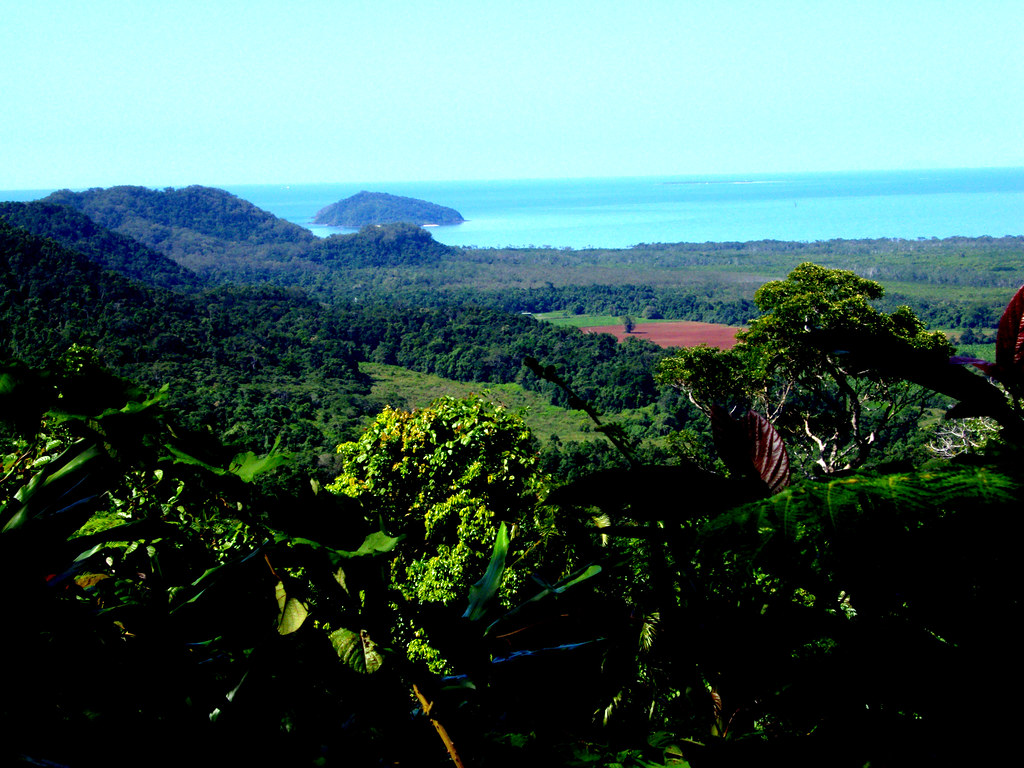
Beneath the visible splendor of Jurassic plant life, an invisible network of fungal threads connected virtually every plant in the forest. These mycorrhizal networks were the internet of the ancient world, allowing plants to share nutrients, water, and even chemical signals across vast distances. The fungal networks of the Jurassic were likely even more extensive than those we see today, creating an underground web that connected entire forests into single, integrated ecosystems.
The relationship between plants and fungi during the Jurassic was incredibly sophisticated. Fungi would colonize plant roots and extend their reach into the soil, effectively increasing the surface area available for nutrient absorption by thousands of times. In return, plants provided fungi with sugars and other organic compounds that they couldn’t produce themselves. This partnership was so successful that it became the foundation for virtually all terrestrial plant life.
Some of the fungi involved in these networks were massive organisms in their own right. The largest fungi may have had underground networks that stretched for miles, making them some of the largest living organisms on Earth. These fungal giants played crucial roles in decomposition, breaking down dead plant material, and recycling nutrients back into the soil where they could be used by living plants.
Seed Dispersal: The Jurassic Distribution Network
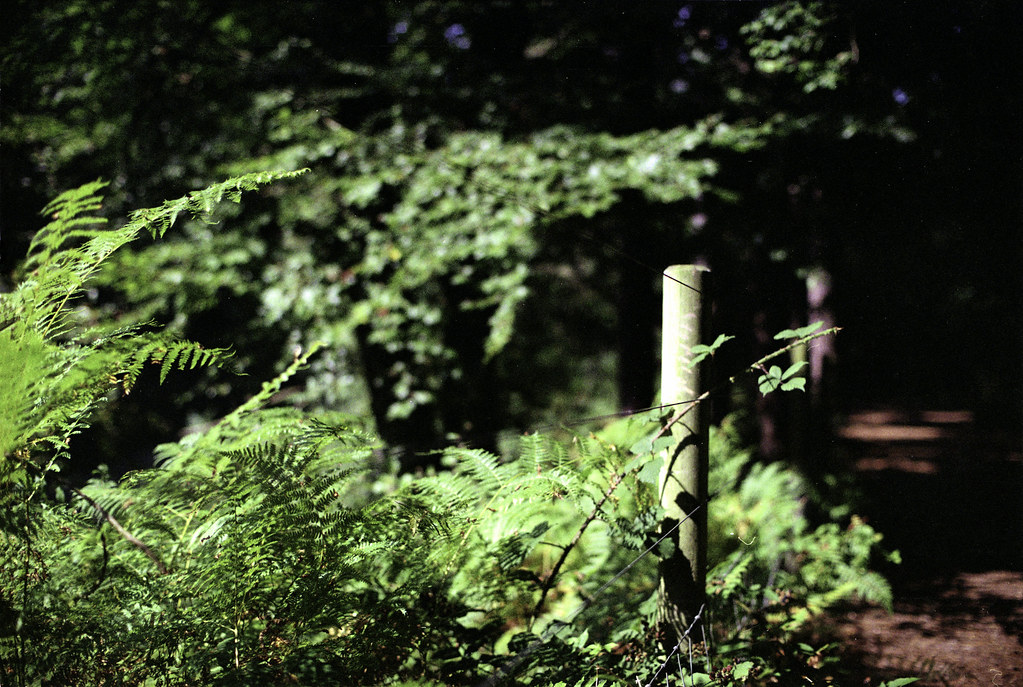
The movement of plant seeds across the Jurassic landscape was facilitated by a distribution network that would make modern shipping companies jealous. Dinosaurs served as living cargo ships, carrying seeds in their digestive systems and depositing them in new locations along with a convenient package of fertilizer. The largest herbivorous dinosaurs could transport seeds hundreds of miles from their original locations, creating a gene flow that kept plant populations healthy and diverse.
Wind dispersal was also incredibly effective in the Jurassic world. The warm, humid conditions created strong thermal currents that could carry lightweight seeds and spores across continents. Some plants developed specialized structures that acted like natural parachutes or helicopter blades, allowing their seeds to travel vast distances on air currents. The result was a rapid mixing of plant populations that prevented local extinctions and promoted the spread of successful adaptations.
Water dispersal was equally important, with rivers and streams carrying seeds from inland areas to coastal regions and even between continents. Many Jurassic plants developed seeds with waterproof coatings that could survive long journeys in salt water, allowing them to colonize new landmasses as they formed or became accessible. This combination of biological, atmospheric, and hydrological dispersal mechanisms created a global distribution network that was remarkably efficient at spreading plant life across the planet.
Adaptation Strategies: Surviving in a Greenhouse World
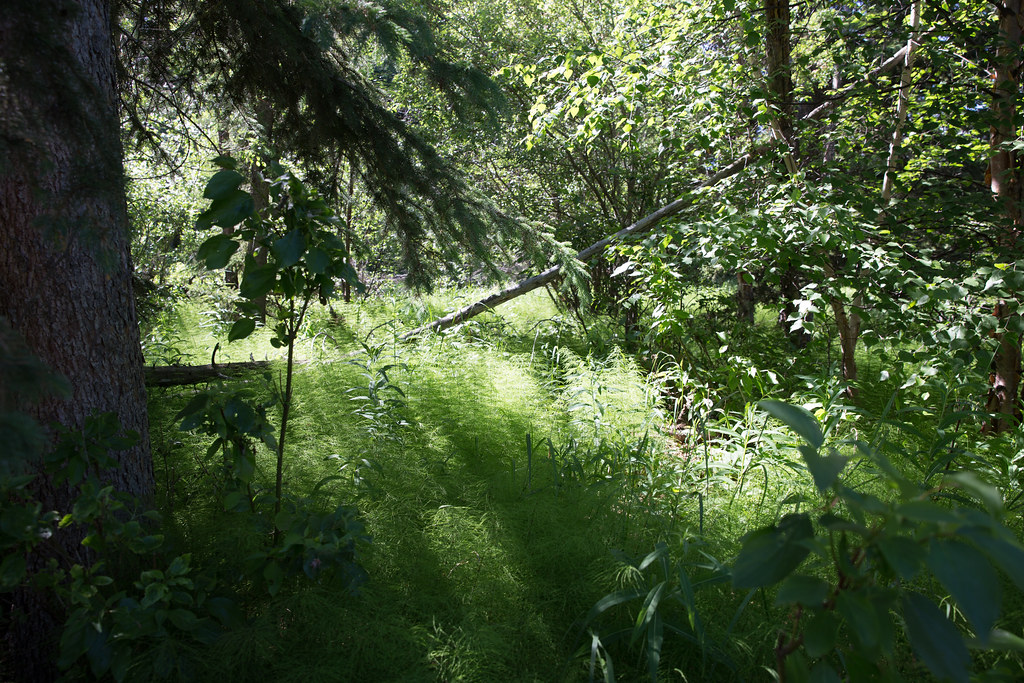
The plants of the Jurassic world had developed remarkable strategies for surviving in what was essentially a global greenhouse. With atmospheric carbon dioxide levels many times higher than today and average temperatures significantly warmer, plants had to adapt to conditions that would challenge even the most resilient modern species. Many developed thick, waxy coatings on their leaves to prevent water loss, while others evolved specialized structures for storing water during dry periods.
The high humidity of the Jurassic world created unique challenges and opportunities for plant life. While water was generally abundant, the constant moisture also promoted the growth of fungi and bacteria that could cause disease. Plants responded by developing sophisticated chemical defenses, producing compounds that could kill harmful microorganisms while attracting beneficial ones. These chemical warfare strategies were so effective that many of the compounds first developed by Jurassic plants are still used by their modern descendants.
The intense solar radiation of the Jurassic world, unfiltered by the ozone layer we know today, required plants to develop sophisticated protection mechanisms. Many species evolved dark pigments that could absorb harmful radiation, while others developed reflective surfaces that bounced excess light away from sensitive tissues. The result was a plant world that was not only incredibly productive but also remarkably resilient in the face of environmental challenges.
The Legacy Lives On: Modern Connections to Ancient Gardens
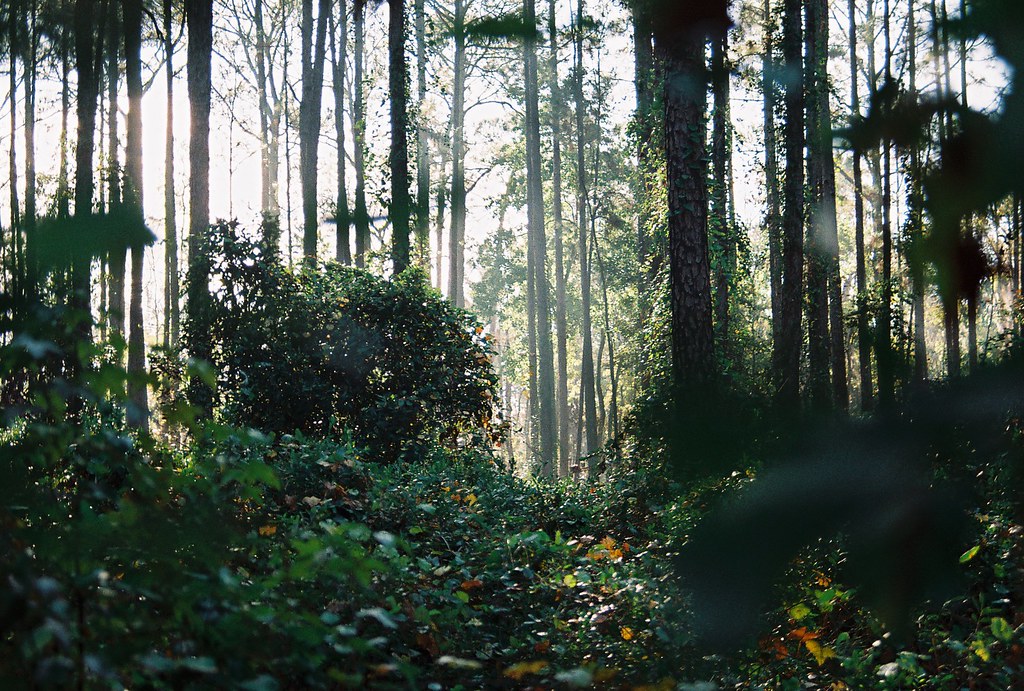
Walking through a modern forest, you’re experiencing echoes of the Jurassic world that existed 150 million years ago. The pine trees swaying in the breeze are direct descendants of the giant conifers that sheltered dinosaurs. The ferns unfurling in the understory carry genetic memories of their tree-sized ancestors. Even the moss beneath your feet connects you to the living carpets that once cushioned the footsteps of the largest animals ever to walk the Earth.
The extinction that ended the Age of Dinosaurs also dramatically changed the plant world, but it didn’t erase it. Many plant families that dominated the Jurassic landscape survived and evolved into the species we see today. The ginkgo trees planted in city parks are living links to ancient forests, while the cycads in botanical gardens are survivors from a world that seems almost alien to modern eyes.
Understanding the plant life of the Jurassic gives us crucial insights into how ecosystems function and how they respond to environmental change. The greenhouse conditions of the Jurassic world may offer important clues about how modern plant communities might adapt to our changing climate. The sophisticated relationships between plants, fungi, and animals that existed millions of years ago remind us that ecosystems are far more complex and interconnected than we often realize.
Conclusion
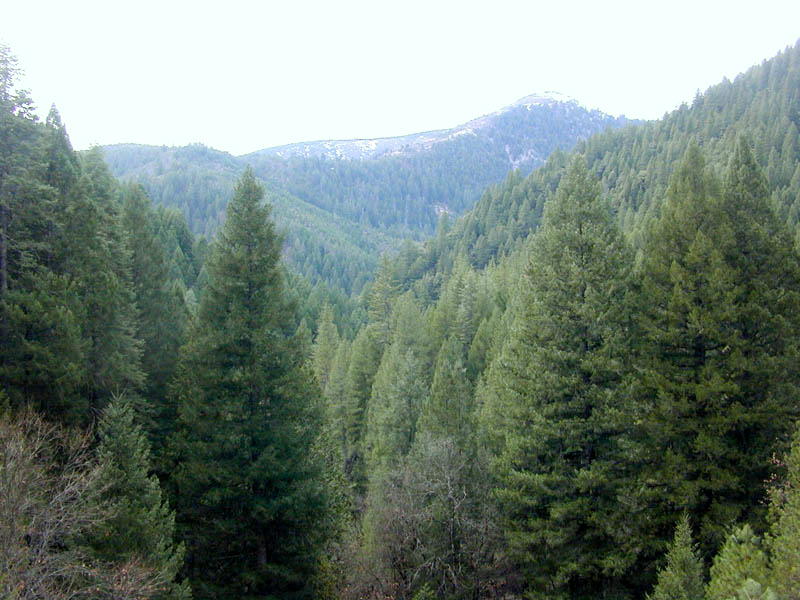
The secret gardens of Jurassic World were more than just a backdrop for dinosaurs – they were dynamic, complex ecosystems that sustained life on a scale we can barely imagine. These ancient plant communities created the oxygen we breathe, the soil we depend on, and the fossil fuels that power our modern world. Next time you see a fern unfurling its fronds or smell the fresh scent of pine needles, remember that you’re experiencing living connections to a world where giants once roamed through forests that touched the sky. What other secrets might these ancient survivors still be hiding?

